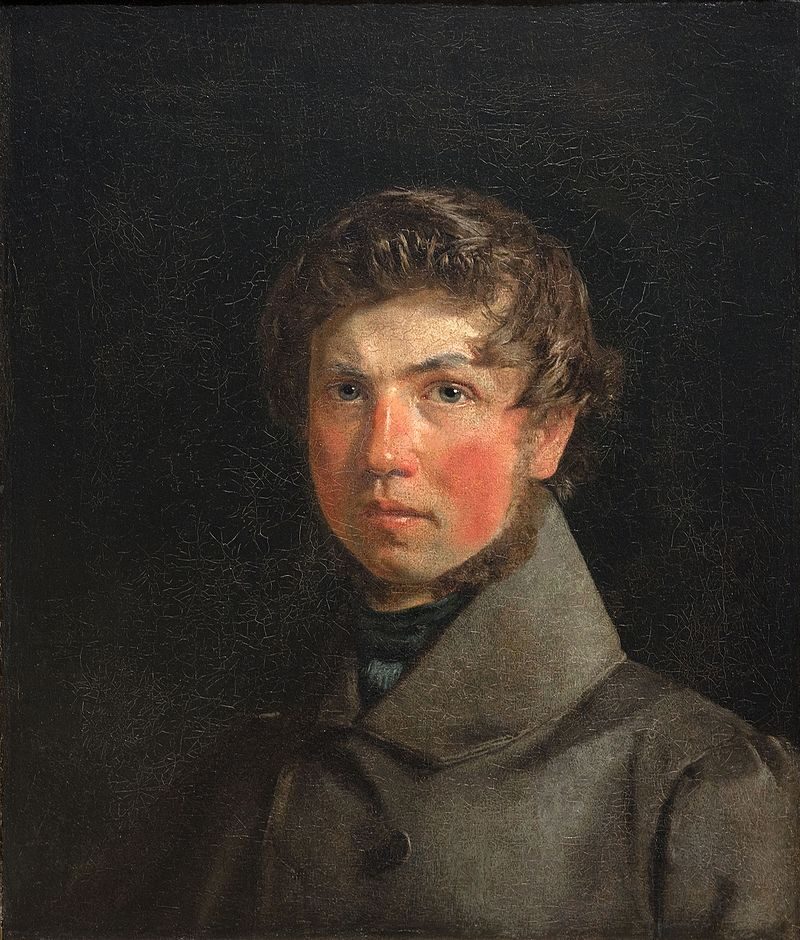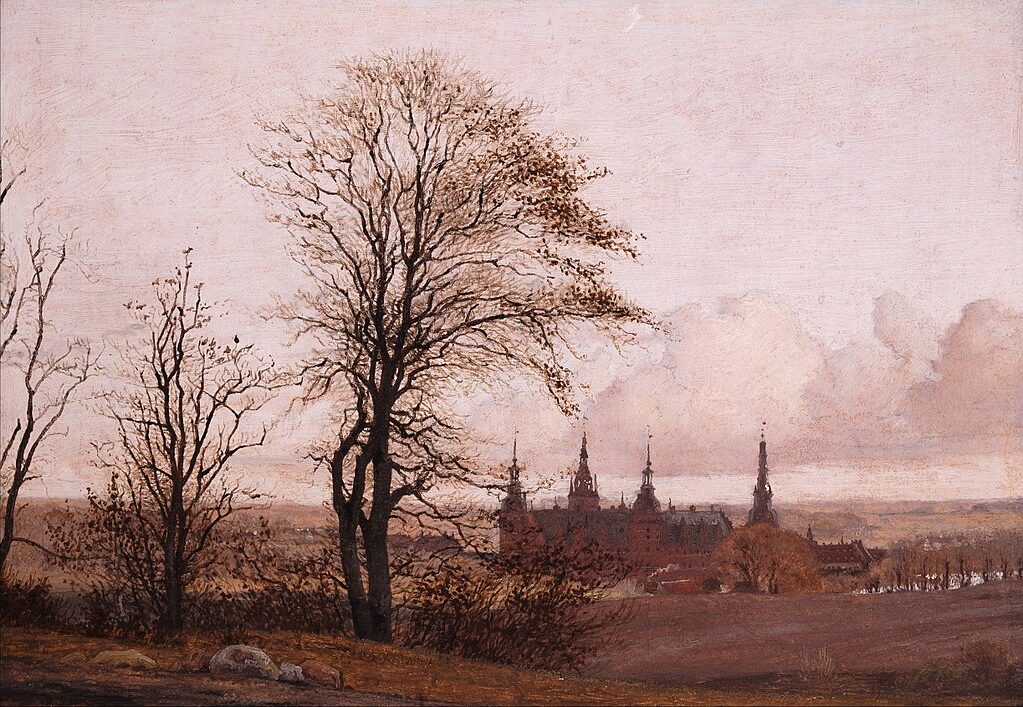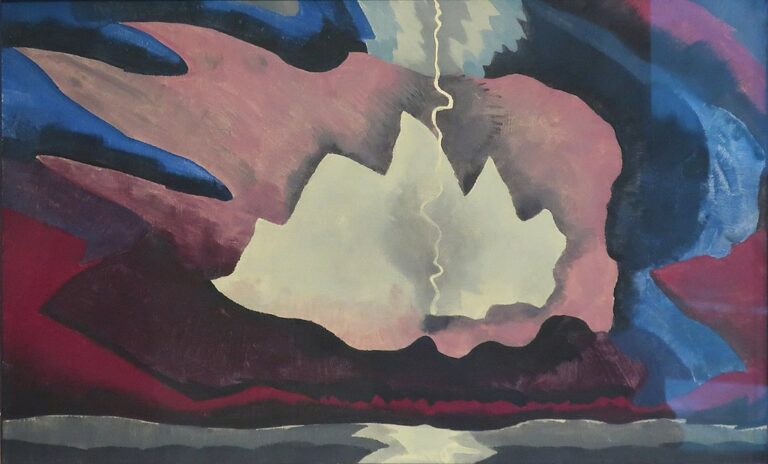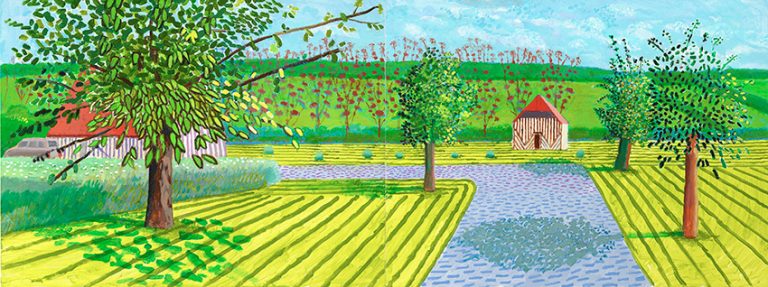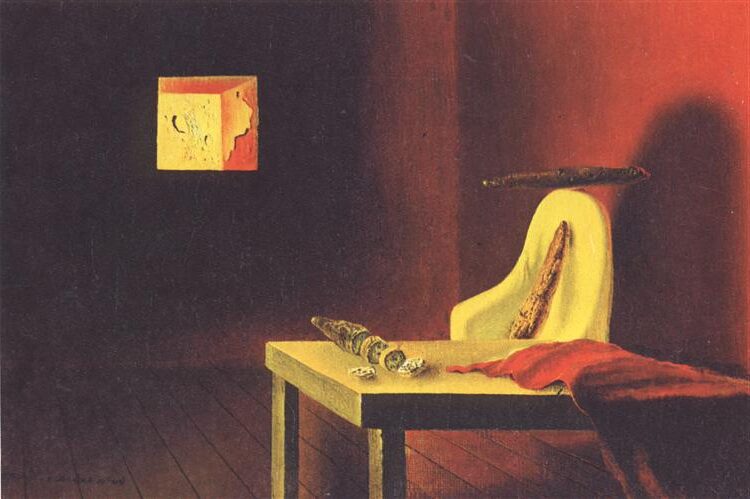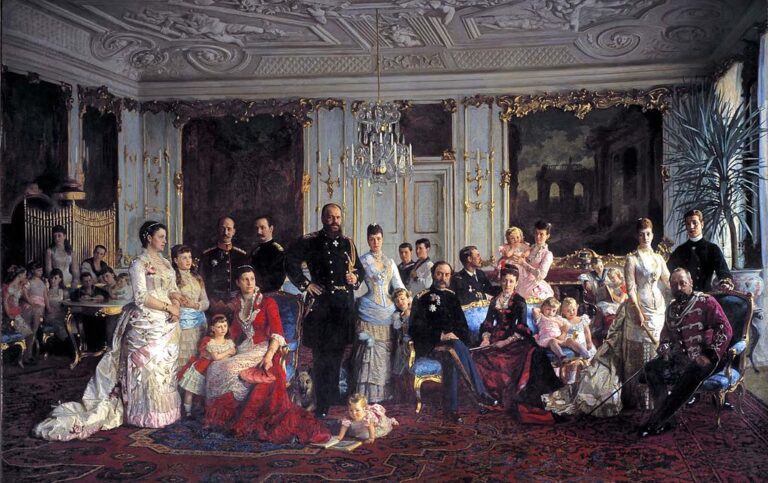Christen Købke: Painter of Danish Golden Age Landscapes and Portraits
Born: 26 May 1810, Copenhagen, Denmark
Death: 7 February 1848, Copenhagen, Denmark
Art Movement: Danish Golden Age, Romanticism
Nationalité : Danois
Teacher: Christian August Lorentzen and Christoffer Wilhelm Eckersberg
Institution: Royal Danish Academy of Fine Arts
Christen Købke: Painter of Danish Golden Age Landscapes and Portraits
Début de la vie et de la carrière
Christen Schiellerup Købke was born on May 26, 1810, in Copenhagen, Denmark. His artistic journey began at a remarkably young age, setting the foundation for his eventual recognition as one of the most important Danish painters de la L'âge d'or.
Rise to Recognition in Denmark
Købke’s formal artistic education began when he was just 12 years old at the Royal Danish Academy of Fine Arts in Copenhagen. This early start came after a significant illness. At age 11, he suffered from rheumatic fever. During his recovery, he created numerous drawings, which solidified his determination to pursue art as a career.
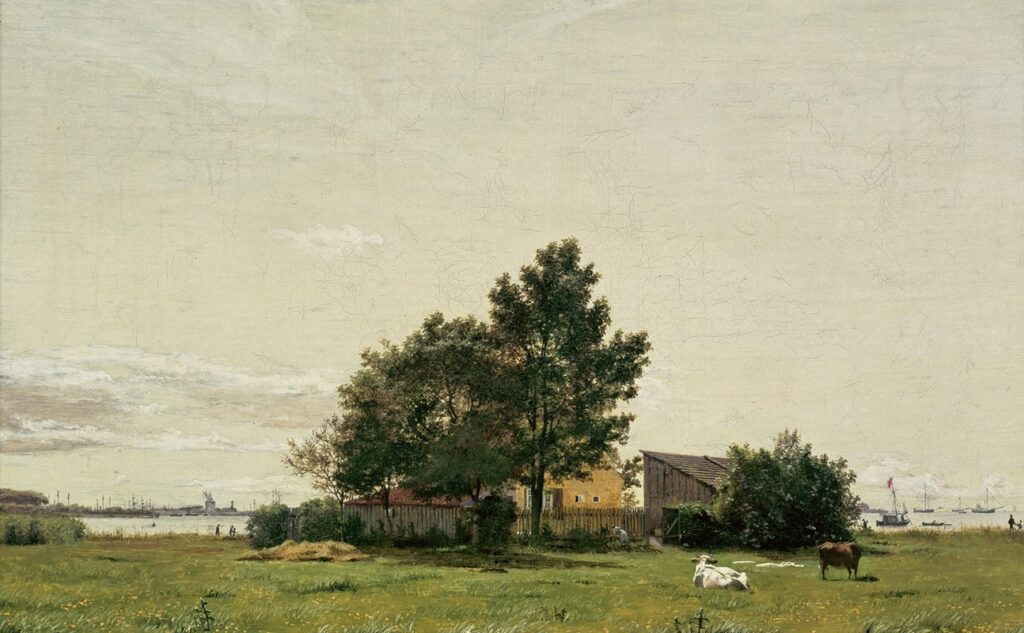
Section near the Lime Kiln with a View towards Copenhagen, 1836, by Christen Købke
The young artist lived with his family within the Citadel in Copenhagen, where his father worked as a master baker. This location would later influence many of his paintings, as he often depicted the familiar surroundings of his youth.
By his late teens, Købke had already begun to develop a distinctive style that would eventually earn him recognition within Danish artistic circles.
Développement artistique et style
Købke’s artistic approach evolved as a realist painter with exceptional attention to detail and light. His early works showed remarkable precision and a keen eye for composition—qualities that would become hallmarks of his mature style.
During his formative years, he created portraits of close friends and family members, demonstrating his growing skill in capturing both likeness and personality. These intimate portraits revealed his ability to convey emotion through subtle expressions and careful attention to his subjects.
Though later in his career he would study in Italy, Købke’s early work was deeply rooted in Danish culture and landscapes. His paintings from this period are characterized by clear light, harmonious colors, and a serene atmosphere that reflected the Danish countryside.
Œuvres notables
Købke’s artworks showcase his exceptional skill in capturing both human emotion et paysages naturels. His precise attention to detail and mastery of light made him one of the most significant painters of Denmark’s Golden Age.
Portraiture and Human Subjects
Købke created numerous remarkable portraits that reveal his talent for capturing human character with sensitivity and precision. His portrait work shows incredible attention to psychological depth while maintaining technical excellence.
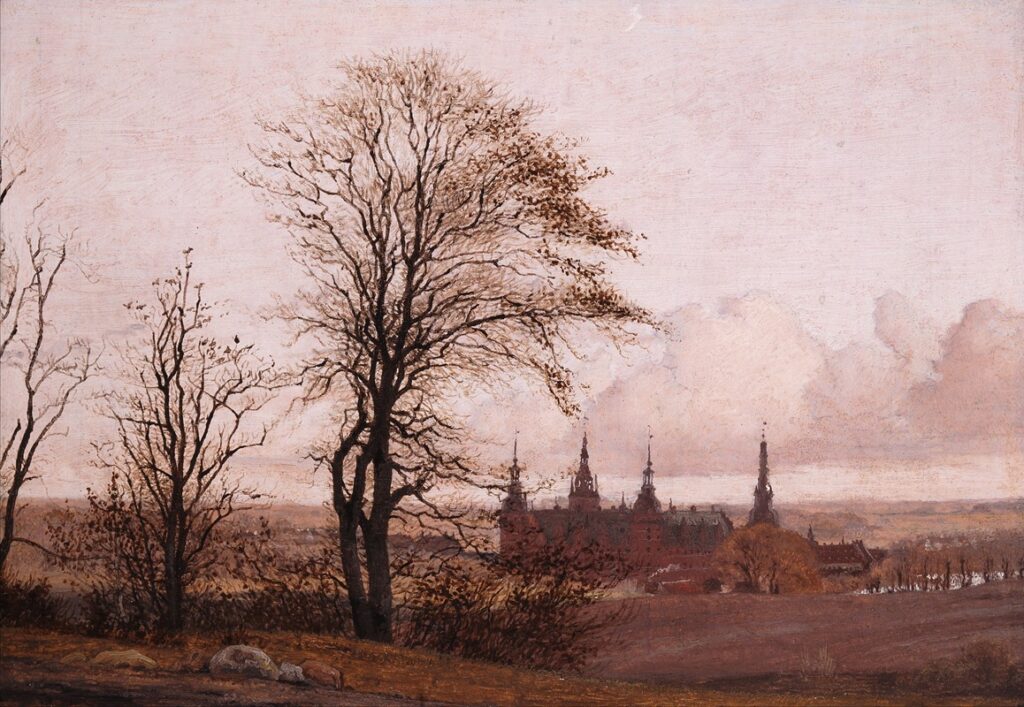
Autumn Landscape. Frederiksborg Castle in the Middle Distance, 1837–1838
Many of his portraits feature family members and friends, painted with a warm intimacy that reveals his close connection to his subjects. One distinctive quality of Købke’s portraiture is his ability to depict subjects naturally, without the stiffness common in formal portraits of the period.
The artist’s approach to portraiture emphasized clarity and truthfulness. He often positioned his subjects against simple backgrounds, allowing their personalities to become the focal point of the composition.
Landscapes and Cityscapes
Købke’s landscapes and cityscapes are characterized by crystalline light and meticulous attention to architectural details. His 1832 painting “Autumn Morning on Lake Sortedam” exemplifies his mastery of light effects and precise composition.

View from Dosseringen near the Sortedam Lake, 1838, by Christen Købke
Frederiksborg Castle appears in several of his most celebrated works. These paintings demonstrate Købke’s extraordinary ability to render architectural elements with technical precision while maintaining a poetic atmosphere.
His cityscapes of Copenhagen captured everyday scenes with remarkable freshness. Many of these works now hang in Denmark’s National Gallery, where they are considered treasures of Danish painting.
Købke’s landscapes are notable for their carefully balanced compositions. He often incorporated water elements that created striking reflections, adding depth and visual interest to his paintings.
Héritage et influence
Christen Købke’s work gained greater recognition after his death, establishing him as one of the most important figures in Danish art history. His precise technique and delicate sensitivity to light and atmosphere influenced generations of artists.
Impact on Danish Realism
Købke’s meticulous approach to painting during the 1830s helped establish the foundations of Danish Realism. His attention to detail and truthful representation of subjects set new standards for accuracy in Danish art. Unlike many contemporaries who romanticized their subjects, Købke painted scenes as he observed them, with remarkable precision.

Efterårsmorgen ved Sortedamssøen, 1838, by Christen Købke
His techniques for capturing natural light influenced later Danish painters who embraced Realism. This approach emphasized honest depiction over idealization, a principle that became central to Danish artistic identity.
Many art historians credit Købke’s work with helping to define a distinctly Danish artistic voice that balanced technical skill with emotional resonance. His legacy continues in the characteristic clarity found in Danish visual arts today.
Commemoration and Collections
Major museums worldwide hold Købke’s paintings, with the National Gallery of Denmark housing the largest collection. His works appear on Danish postage stamps and have been reproduced as high-quality art prints that remain popular in Scandinavian homes.

View of a Street in Østerbro outside Copenhagen. Morning Light, 1836
In 1998, Denmark commemorated the 150th anniversary of Købke’s death from pneumonia with a major retrospective exhibition. This renewed interest in his contributions to Danish culture.
The careful framing and conservation of his works reflect their importance to Danish cultural heritage. Art reproductions of his paintings serve as a gateway introducing international audiences to Danish Golden Age art.
Engravings based on his paintings helped spread his visual language throughout Europe during the 19th century. Today, his name adorns streets and cultural institutions in Copenhagen, ensuring his legacy remains visible in Danish society.
Questions fréquemment posées
Christen Købke’s héritage artistique continues to intrigue art enthusiasts worldwide. His distinctive approach to light, precise technique, and connection to the Danish Golden Age make him a fascinating subject of study.
What era did Christen Købke belong to in art history?
Christen Købke (1810-1848) was a key figure in the Golden Age of Danish painting. This period flourished in the first half of the 19th century.
The Golden Age represented a time of cultural and artistic renaissance in Denmark. It emerged following difficult years of economic hardship and defeat in the Napoleonic Wars.
Købke worked alongside other notable Danish artists of this era, creating work that celebrated Danish national identity and landscape.
Which museum houses the largest collection of Christen Købke’s works?
The Statens Museum for Kunst (SMK) in Copenhagen holds the most comprehensive collection of Købke’s paintings. As Denmark’s national gallery, it has preserved many of his finest works.
Other significant collections can be found at the Hirschsprung Collection in Copenhagen and the Ny Carlsberg Glyptotek. These institutions showcase his landscapes, portraits, and architectural studies.
International museums like the National Gallery in London have also featured special exhibitions of his work, introducing him to wider audiences.
How did Christen Købke contribute to Danish painting during the Golden Age?
Købke elevated Danish painting through his extraordinary treatment of light and meticulous attention to detail. His work captured the essence of Danish life and landscapes with remarkable clarity.
He focused on subjects close to home, painting the areas around Copenhagen with remarkable precision. This approach helped establish a distinctly Danish visual identity during a period of national renewal.
His intimate portraits revealed profondeur psychologique while appearing deceptively simple. This combination of technical excellence with emotional resonance made his contributions particularly valuable.
Can you name some of Christen Købke’s most famous paintings?
“View of Lake Sortedam” (1838) stands as one of Købke’s most celebrated landscapes, showcasing his mastery of light and atmosphere.
“Frederiksborg Castle in the Evening Light” (1835) demonstrates his skill at architectural painting, capturing the historic structure with both accuracy and feeling.
His portrait “Portrait of the Artist’s Mother” (1836) reveals his ability to convey personality and emotional depth through seemingly straightforward portraiture.
“Morning View of Østerbro” (1836) exemplifies his talent for transforming everyday scenes into works of timeless beauty.
What techniques and styles is Christen Købke known for?
Købke is renowned for his plein air painting technique, working outdoors to capture natural light directly. This approach gave his landscapes remarkable luminosity and atmospheric truth.
His portraits display a deceptive simplicity that masks extraordinary technical control. He created compositions that appear casual yet are carefully constructed.
Color harmony characterizes his work, with a palette that feels natural yet achieves striking visual impact. His precise brushwork allows for exceptional detail without sacrificing overall coherence.
How has Christen Købke’s work influenced modern art?
Købke’s emphasis on precision and clarity anticipated later artistic movements. His attention to light effects influenced subsequent generations of landscape painters.
His focused compositions and ability to find significance in everyday subjects resonated with 20th-century painters. They sought to capture ordinary life with fresh perspective.
International exhibitions have expanded his influence. Contemporary Danish artists continue to reference his approach to light and landscape in their work.


